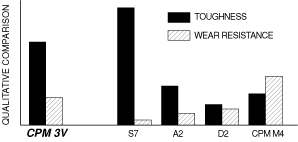With today's steels, I almost always prefer stainless -- or something semi-stainless like 3V or Vanadis 4E. You can avoid rust without taking heroic measures and you get an edge that lasts longer. Elmax, Vanax SC are incredible stainless steels more than tough enough for fixed-blade use. AEB-L and NitroV are super tough and stainless, although AEB-L doesn't hold an edge well.
But I have to admit that a simple steel like 1095 can be awesome -- especially in dry conditions. I have a kitchen knife from a custom maker in 1095 -- very thin blade and a beautiful slicer. But in the kitchen, it just rusts too easily, especially around the bolster. So I gave up on it in the kitchen, but wanted to see how it performed. The maker used a really nice heat treat. That thin-bladed kitchen knife was super tough -- wouldn't chip, wouldn't break under "normal abuse." Lovely steel with that heat treat.
Still, I find stainless to be a useful feature, not just because the blade doesn't rust, but because the edge doesn't rust and lose it's keenness to corrosion.
But I have to admit that a simple steel like 1095 can be awesome -- especially in dry conditions. I have a kitchen knife from a custom maker in 1095 -- very thin blade and a beautiful slicer. But in the kitchen, it just rusts too easily, especially around the bolster. So I gave up on it in the kitchen, but wanted to see how it performed. The maker used a really nice heat treat. That thin-bladed kitchen knife was super tough -- wouldn't chip, wouldn't break under "normal abuse." Lovely steel with that heat treat.
Still, I find stainless to be a useful feature, not just because the blade doesn't rust, but because the edge doesn't rust and lose it's keenness to corrosion.


